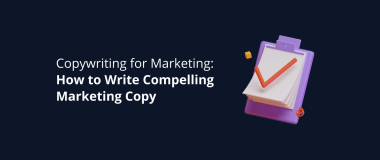Transactional emails that are informative and concise, and, at the same time, delight your clients and provide additional value can significantly boost the post-purchase customer experience.
They can contribute to building a stronger relationship with your clients, and may even improve retention.
However, companies tend to underestimate the branding potential of these kinds of messages and, more often than not, check off their functional properties and leave it at that.
In this article, we provide actionable ideas on how to go the extra mile in your transactional emails and provide an excellent customer experience.
Read on to find out!
What Are Transactional Emails?
A transactional email is an automated message triggered by an action or interaction conducted by a website or app user. Its purpose is to provide information to the user, notify them of any changes to their account’s status, and/or keep them posted about any updates.
The most common transactional emails, include, but are not limited to:
- Welcome messages
- Opt-in confirmations
- Order confirmations
- Delivery status updates
- Shipping notifications
- Payment information
- Password changes
- Abandoned shopping carts
- Account updates
Transactional Email Vs. Marketing Email
A transactional email is not a marketing email.
In fact, there are 5 key differences that set these two types of messages apart:
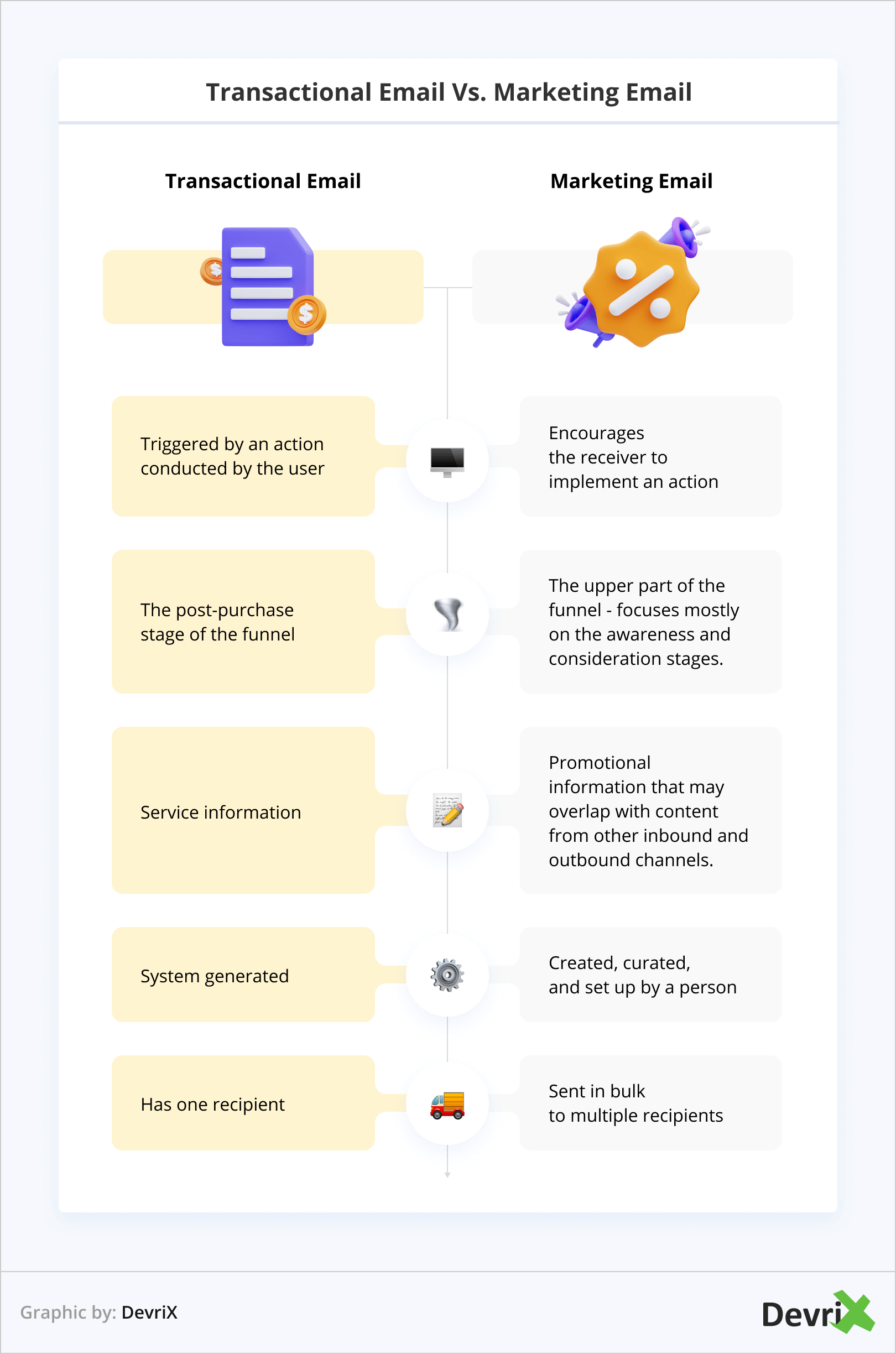
- Purpose. Marketing emails include newsletters, promotions and offers, upselling and cross-selling suggestions, campaign messages, event notifications, etc.These are all formats dedicated to encouraging the receiver to implement an action – such as sign-up, visit the sender’s website, make a purchase, download a resource, etc.Transactional emails are triggered by an action conducted by the user.
- Place in the Funnel. Marketing emails are positioned in the upper part of the email marketing funnel, focusing mostly on the awareness and consideration stages.Transactional emails are a feature of the post-purchase stage of the funnel.
- Content. Marketing emails include different types of promotional information that may overlap with content from other inbound and outbound channels, such as content marketing, social media marketing, influencer initiatives, events, advertising, landing pages, SEO, etc.Transactional emails provide service information.
- Origin. Marketing messages can be automated or sent manually. However, they are always created, curated, and set up by a person.Transactional emails are always system-generated.
- Deliverability. Marketing emails are sent in bulk to a business’s email list. Regardless of whether they are personalized or not, they are always aimed at multiple recipients.Transactional emails always have a single dedicated recipient.
Why Are Transactional Emails Important?
As you can see, unlike marketing messages, transactional emails are something that customers want and expect to receive.
In fact, users are, more often than not, happy to see them in their inboxes, because they deliver important information.
As such, transactional emails have unique value to businesses. When your customers are in a good mood, it’s easier to work on your connection with them, as well as bring up pertinent information that is not entirely transactional but can be mutually beneficial.
Of course, this doesn’t mean that you should try to take advantage of them and sneak in unsolicited marketing messages. On the contrary, you should strive to provide additional value, and satisfaction.
For example, think of buying a new house. A house is often just a house regardless of where it’s situated. However, the extra details like hardwood floors or marble countertops, whether it has a fireplace or a garden in the front, etc., provide that extra value the buyer is looking for. These little details often make a house a home as it provides joy or satisfaction to the buyer.
It’s pretty much the same with transactional emails. Your basic service information is enough to convey your message, but adding a few extra details can do wonders for the user experience.
How to Send Transactional Emails That Make a Difference
Now let’s have a look at how to boost the performance of your transactional emails to deliver an excellent customer experience:
1. Ditch the No-Reply Address
Most tools that automate transactional emails use no-reply addresses. This means that when the recipient receives the email they have no way of writing back to the sender.
If they have any concerns, questions, or need further information they need to look for other ways to contact the company.
This can be very frustrating to customers and can hurt the user experience. In fact, according to ActiveCampaign, 29% of users are even willing to stop shopping with a brand because of this.
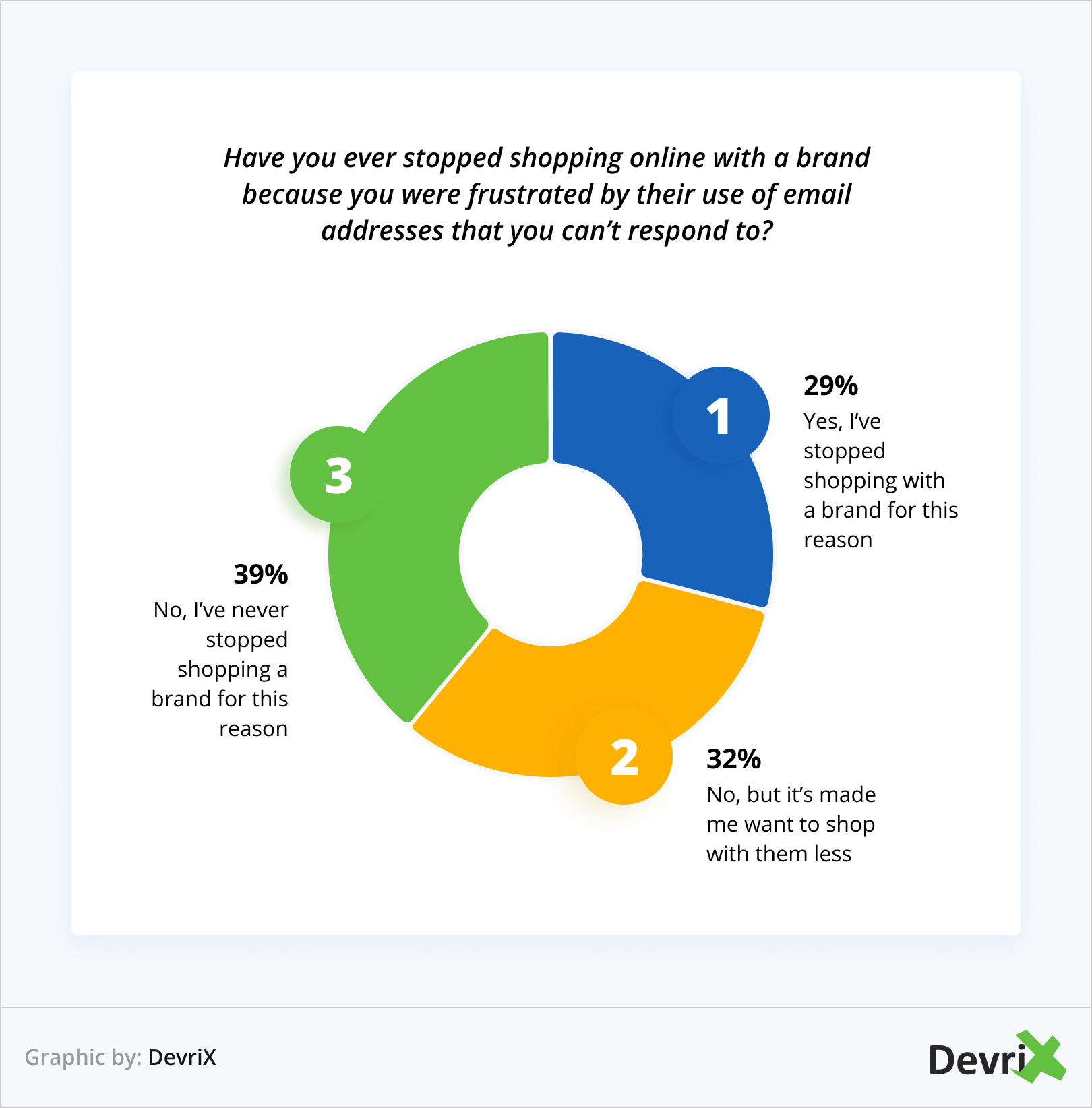
The good news is that this problem is easy to avoid.
Just change the types of addresses that your tool sends the messages from with ones that you monitor.
Even if you are unable to adjust these settings, more often than not, you can customize the message.
In it, you can provide an email or a list of emails that the customer should contact in case of questions or pertinent issues.
2. Provide FAQ in the Email Copy
Another proactive approach to consider is to provide in the email a list of frequently asked questions. This can save your customers time and can, potentially, reduce buyer’s remorse.
What topics to feature depends on the type of email.
However, it’s always a good idea to inform the customer of what’s up next. By mapping out the steps that follow after the interaction until the completion of the purchase or ticket, you will make your customers feel more comfortable and confident.
Also, you may reduce their confusion and frustration.
In addition, consider collaborating on the FAQ list with your customer support team. They can tell you what types of questions customers contact them with, what type of information people care about at different stages of the transaction, and what are the most common issues they encounter.
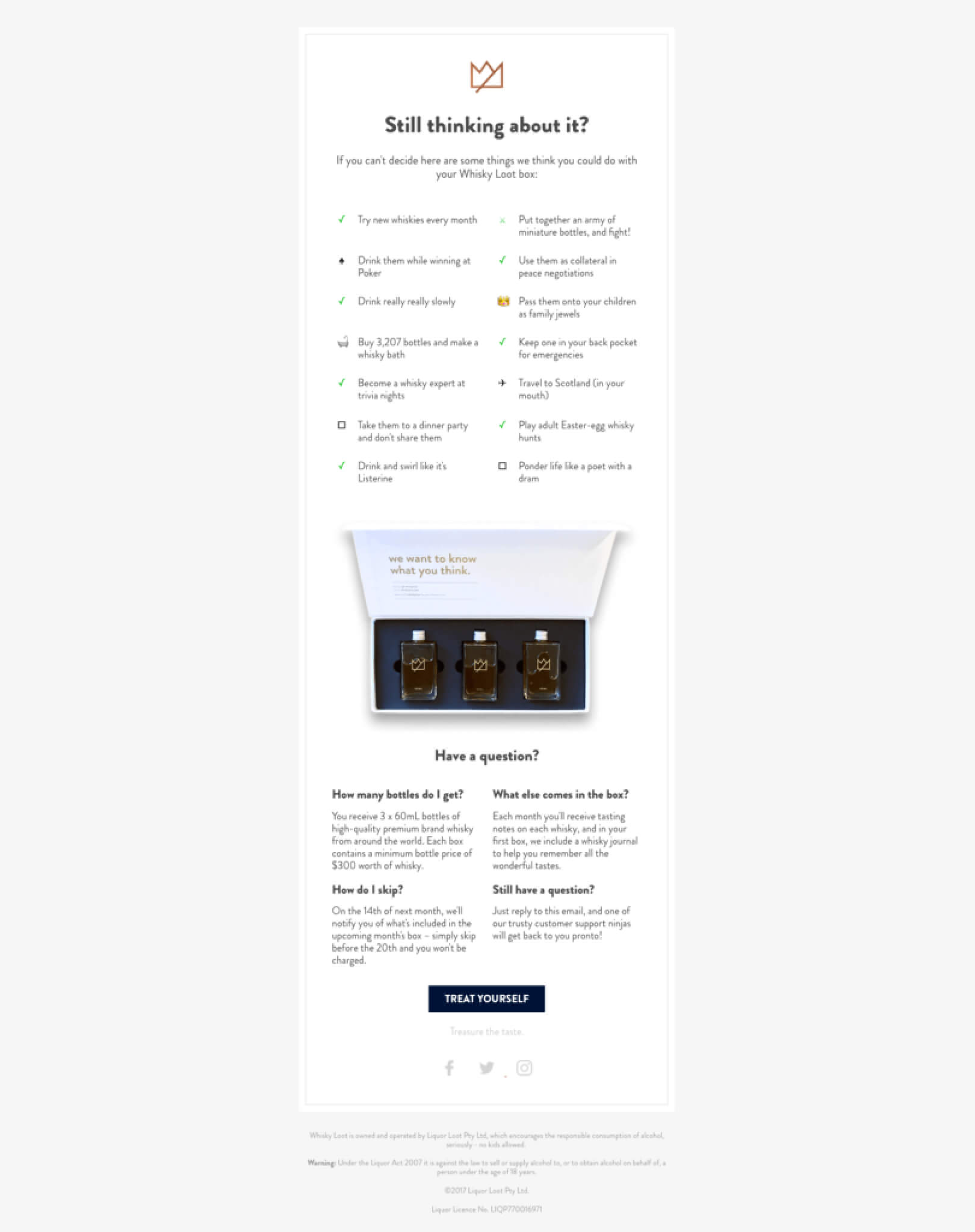
3. Write Engaging But Clear Copy
Transactional emails don’t need to be plain and boring.
In fact, spicing them up with more engaging copy that matches your brand identity, tone, and the topic of your products can be a nice touch.
Customers enjoy witty content, and seeing it in the transactional email can make them feel a stronger bond to your brand.
However, when it comes to more technical emails, don’t overdo it, because it can make the message seem unnatural and can even dilute the main information that you want to convey.

4. Add Beautiful and Relevant Images
Depending on the type of email, adding beautiful, properly placed, and relevant images can make all the difference to the customer.
For example, it’s obvious that when you are sending an order confirmation email it needs to include a clear high-quality image of the product.
However, even other transactional emails such as welcome messages, delivery information, password reset, and so on, can be improved by a nice image or graphic.
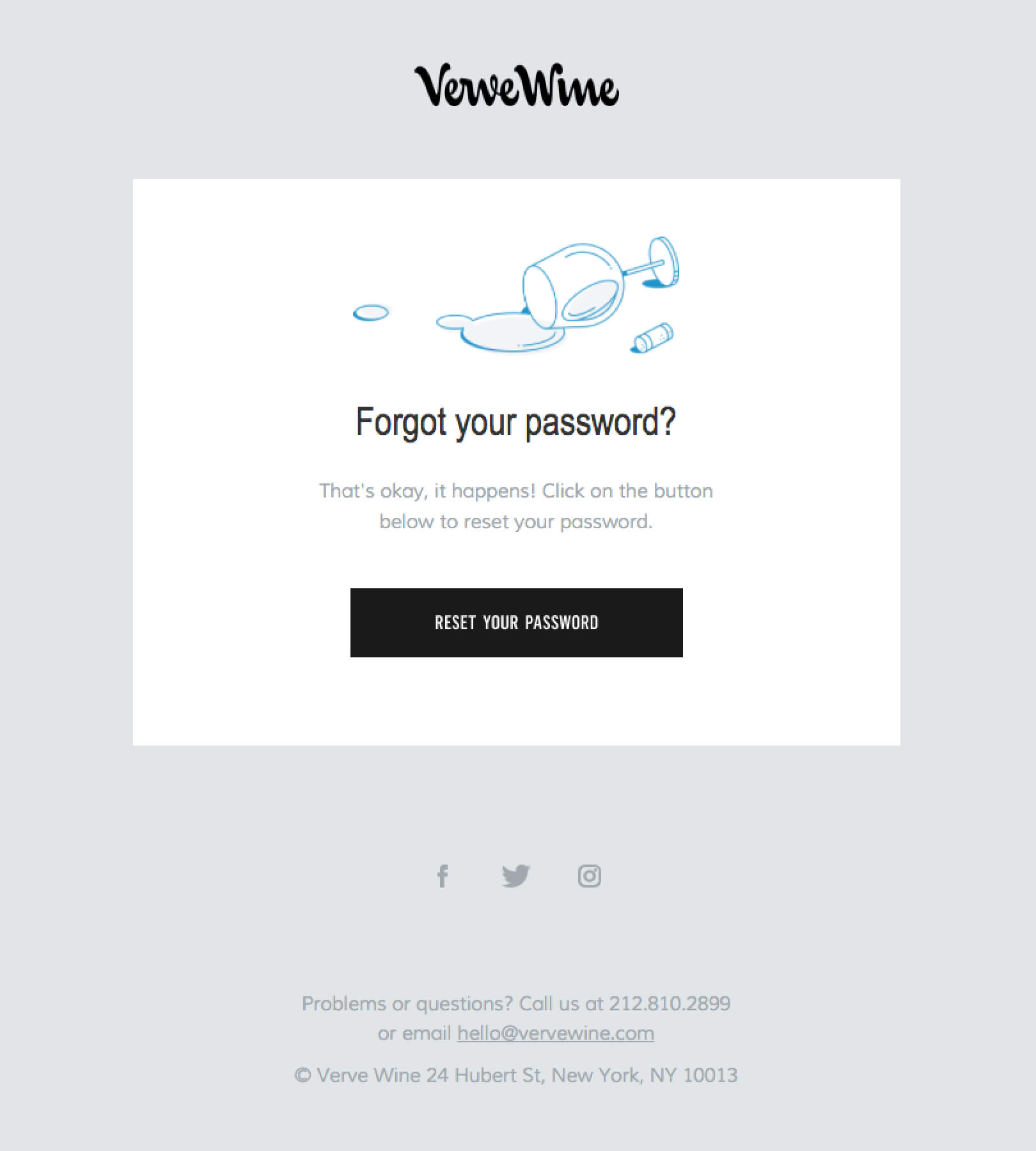
People engage with images far more often than they do with written content. And while a simple message that contains only text can convey a piece of information, the same message with a beautiful and relevant image can make a lasting impression.
And this can improve the user experience.
5. Add Clear and Compelling CTA
While, as mentioned, the goal of transactional emails is not to prompt action, more often than not, they do feature one or more pertinent CTAs.
To avoid confusion as to what is expected of the customer, and provide a pleasant user experience, these need to be clear, well-positioned, and relevant.
For example, the purpose of a welcome email is to confirm to the user that their registration has been successful and to inform them of what to expect as a registered user.
However, you can add various CTAs inviting them to browse through your products, read your blog, join your community, follow you on social media, etc.

Be careful, though, not to add too many CTAs as this can confuse and even annoy the user. Consider what steps come next and most naturally to your customers, and/or what goals are most important to you at this point of the transaction. It’s also recommended that you should not have more than three CTAs per email.
6. Stick to Simple and Concise Subject Lines
While it may pay to add a pinch of creativity to the copy and design of your transactional emails, the subject line is something that you shouldn’t mess around with.
The user needs to be able to understand in just a glance that this is the service message that they are waiting for. Otherwise, they may become confused and even miss it among the other emails in their inbox.
And this can lead to an unpleasant user experience.
Furthermore, subject lines that are too creative can sometimes make the recipient suspicious, simply because this is a common practice in copycat spammers that want to “warn” you that your account has been hacked.
7. A/B Test Different Versions
As with any other type of email, to find the optimal composition that engages users, drives high click-through rates, and boosts performance, you need to conduct A/B testing.
How your audience reacts to the emails depends on their content preferences.
Maybe they don’t want images in a transactional email and find them distracting. Or maybe a nice relevant image will make them identify with the product and brand quicklier, and strengthen your relationship.
The only way to find out is to design different visions of the emails and test them.
Most email tools that allow customization provide this option, so play around with it to ensure that the transactional emails you send match the needs and requirements of your audience.
Bottom Line
The purpose of a transactional email is to deliver service information to the user and notify them of changes regarding their account.
Plain and simple, right?
However, it can also be an important client touchpoint that allows you to express your brand identity, delight the receiver, and provide additional value.
Sending generic transactional messages stripped of all creativity and individuality is a missed opportunity to strengthen your relationship with the audience.
With a tiny effort, you can boost the post-purchase experience, improve retention, and promote engagement.



